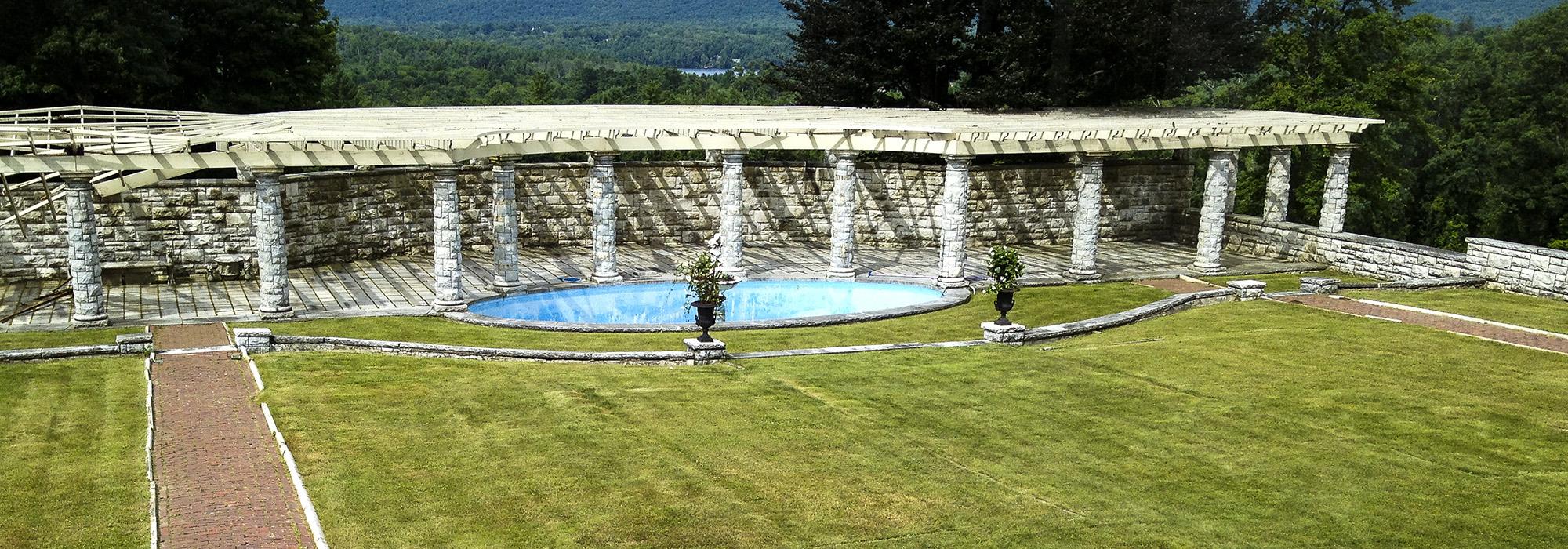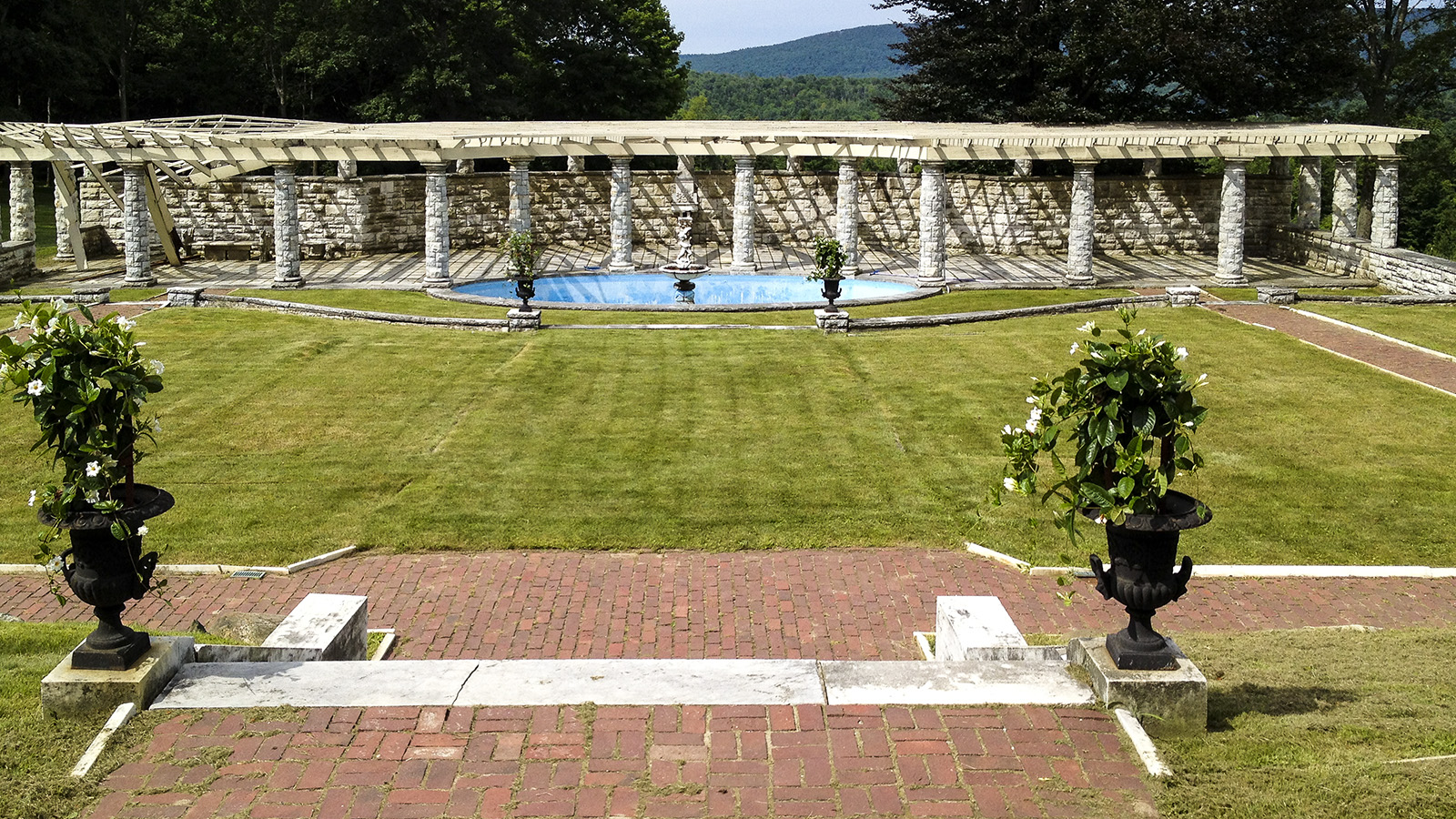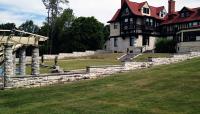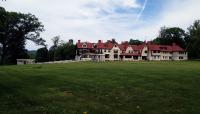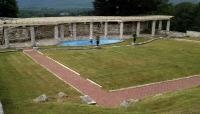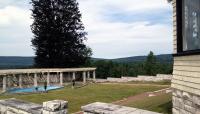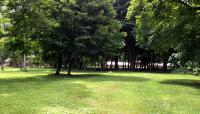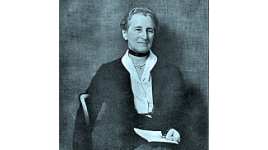Landscape Information
Located one mile from downtown Lenox, this estate built in 1886 for William Douglas and Emily Vanderbilt Sloane is known for its picturesque views of the Stockbridge Bowl and Berkshire Mountains. The manor, designed by the Boston architects Peabody and Stearns, was enlarged continuously through 1900 to over 90 rooms and is considered the largest Shingle-style house in the country. In 1919, it held the “Elm Court Talks” which led to the creation of the League of Nations and the drafting of the Treaty of Versailles.
In 1888, Frederick Law Olmsted, Sr.'s firm, known then as F.L. & J.C. Olmsted, was retained to design the 90-acre estate grounds, surrounded by wooded parkland. More than 40 acres of lawn and formal gardens were constructed around the manor, including an ornamental pool framed by a semi-circular pergola once covered in wisteria and a large marble pergola overlooking the tennis courts. A decorative fountain fronts the massive greenhouses, which span two acres in which gardener Frederick Herremans raised fruits and flowers for estate use. In 1908, landscape gardener Beatrix Farrand created large beds with herbaceous plants and roses on the grounds. The Olmsted Brothers returned to the property from 1923-1925 to update the formal Flower Garden. A giant elm tree, which gave the estate its name, graced the front lawn until it succumbed to disease in the early 1960s.
After 50 years of vacancy and deterioration, the manor was extensively renovated in the mid-2000s, and divested to a hotel group in 2012. Elm Court was the last Berkshires “cottage” to remain within its original family, and was listed in the National Register of Historic Places in 1985.



